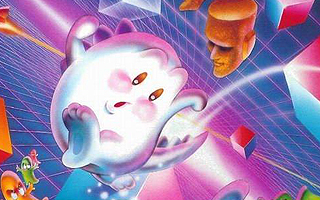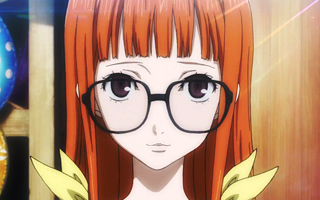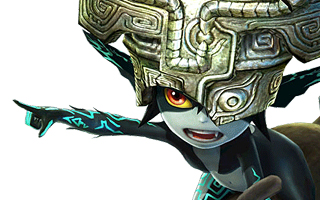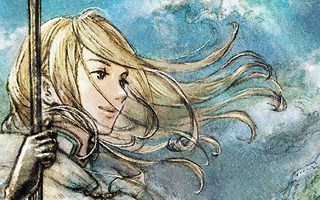To Be Continued... Never
Top 10 Unresolved Video Game Cliffhangers!
When done properly, a cliffhanger ending can keep audiences engaged while they are waiting for the next episode to arrive. Frodo was taken by the enemy at the end of The Two Towers, The Empire Strikes Back left our heroes with an uncertain future, and America spent the better part of a year discussing who shot J.R. Ewing. In these examples, the fans couldn’t wait to see how the stories ended. Cliffhangers are a staple of serialized media, but they can be risky to implement in other situations. Writers and producers may have every interest in continuing their stories, but business is business. Projects are cancelled, studios close, and plans change. You should always leave them wanting more, but unresolved cliffhangers are a mark of arrogance and a source of endless frustration. On that note, this list will undoubtedly open old wounds. Games like Beyond Good & Evil that currently have sequels in development will not be considered for this list, but everything else is fair game.
Examples: The Sarah Connor Chronicles, Lois & Clark, Angel
10
Xenoblade Chronicles X
2015

Prior to the events of Xenoblade Chronicles X, humans crashed on the distant planet Mira while fleeing the Earth in the wake of an alien invasion. As a safeguard to protect humanity after the war, a massive supercomputer known as the Lifehold Core was constructed. The DNA sequences and memories of the survivors were stored within the Lifehold, while androids known as Mimeosomes acted as their avatars on the outside. Great efforts were taken to locate and protect the Lifehold, but a post-credits scene revealed that it had already been destroyed. It’s unclear how the Mimeosomes were able to function without the Lifehold, but it’s implied that the planet Mira was not what it seemed. The cliffhanger is both intriguing and perplexing, but it wouldn’t be fair for an active franchise to be ranked any higher on this list. The Xenoblade series is alive and well, so there’s still a chance that our questions will be answered in the future. It’s fun to theorize in the meantime, but I can’t wait to get an official explanation.
9
Metal Arms: Glitch in the System
2003

Metal Arms: Glitch in the System is a cult classic that tells the story of a robotic civil war on a distant planet made of scrap metal and space junk. During the game, a heroic robot named Glitch leads the charge to overthrow the tyrannical General Corrosive. Ultimately, it’s revealed that the conflict had been set in motion by the evil Dr. Exavolt. It was Exavolt’s experiments that gave rise to General Corrosive in the first place, and he had apparently been calling the shots the entire time. After General Corrosive is defeated at the end of the game, Exavolt watches from his space shuttle and claims that he’s not done with Glitch yet. The developers at Swingin’ Ape Studios were working on a sequel, but the project was canceled after they were swallowed up by Blizzard Entertainment. Apparently, Exavolt was done with Glitch after all. With Metal Arms on the shelf, the team at Swingin’ Ape Studios was reassigned to StarCraft: Ghost. Ironically, Blizzard pulled the plug on that project too. It’s unlikely we’ll get a conclusion to the story, but you should still check out the game if you get a chance.
8
Viewtiful Joe 2
2004

After Viewtiful Joe and his partner Silvia defeated the evil Emperor Black to save Movieland for a second time, it became apparent that their work wasn’t done. At the end of Viewtiful Joe 2, Silvia made reference to a “third threat” that had yet to be defeated. Our heroes were warned about an enemy beyond imagination as a mysterious castle arose in the distance, but we never saw a conclusion to the story. As fans were awaiting Viewtiful Joe 3, two spinoff games were released before the game’s developer (Clover Studio) was dissolved by Capcom in 2007. Perhaps Capcom was the third threat the entire time. Capcom released an Ōkami sequel after the closure of Clover Studio, but we haven’t seen Viewtiful Joe since 2005 and it’s unlikely that Viewtiful Joe 3 will ever materialize. It wouldn’t be the same without the original team behind it, so maybe it’s for the best. Viewtiful Joe had “sure thing” written all over it, so it was surprising to see the series fall to the wayside.
7
Ecco: The Tides of Time
1994

Ecco: The Tides of Time is centered around Ecco’s efforts to save his dolphin pod from the Vortex aliens. In this outing, Ecco travels to a distant future populated by telekinetic dolphins that have the ability to fly. After returning from the future, Ecco learns that the use of his Atlantean Time Machine™ had somehow split the stream of time in two. One future has flying dolphins while the other contains a mechanical world ruled by the Vortex. After defeating the Vortex and securing a happy future, Ecco is instructed to destroy his time machine once and for all. Surprisingly, he decides to use the time machine instead. When the game ends, Ecco is transported to an unknown era and lost in the Tides of Time and players are given a secret password which was intended to be used in the sequel. Sadly, the storyline and the password were both ignored in the Dreamcast follow-ups. I really wanted to see what they had planned on doing with the password, but I guess we’ll never know. In retrospect, Ecco really should have just destroyed his time machine when he had a chance. That’ll learn ya!
6
Vanquish
2010

Victor Zaitsev is a cruel military commander who helped instigate a coup against the Russian Federation. All the while, the American president had secretly supported his organization from behind the scenes. She planned to use the coup as a pretext to declare war on Russia, but she killed herself after she was exposed. Zaitsev faced apparent defeat at the hands of US forces, but his organization detonated a tactical nuke in the United States after the battle. During the final scene, Zaitev is seen conversing with an apparent superior who asserts that their “ascent to power is complete” and alludes to “the next phase” of their plan. The director (Shinji Mikami) left PlatinumGames following the game’s release and Sega’s contract with the developer expired in 2012, so we’ll likely never know what this “next phase” entailed. PlatinumGames is one of the best developers in the entire industry, but they usually rely on other companies to publish their games. They obviously can’t make sequels to IPs that they don’t own, so it’s frustrating when they write themselves into corners that they’ll never have a chance to get out of.
5
Prey
2006

When Tommy Tawodi was abducted by aliens, the troubled Cherokee mechanic tapped into his spiritual powers to fend off a full-scale invasion. His girlfriend and his grandfather both died in the skirmish, but he was backed by a group of underground rebels that lived on the massive alien mothership. Heeding the advice of his grandfather, Tommy crashed the ship into the sun before awakening in the after-life. It wasn’t his time to die, however, so he was permitted to return to Earth. The game’s prologue takes place six months later and shows Tommy back home on the reservation. Without warning, one the rebels that helped him emerges from a portal and explains that there are powerful beings that are anxious to meet him. We’re explicitly told that “Prey will continue,” but the sequel spent years in development before being cancelled outright. The 2017 reboot featured an entirely new story and made no reference to Tommy. It should be illegal to reboot a series that has an unresolved cliffhanger.
4
XIII
2003

XIII is a stylish first-person shooter that’s loosely based on a series of graphic novels from Belgium. The game put players in the shoes of an amnesic man named Jason Fly who is accused of assassinating the President of the United States. As Jason tries to figure out who he is, it becomes apparent that the murder was part of a larger conspiracy to overthrow the government. It’s inferred that the President’s brother was the lead conspirator, but the game ends just as Jason confronts him. Unfortunately, the game sold poorly and the sequel never happened. XIII looked like a moving comic book and was rightly praised for its cel-shaded visuals, but the generic “to be continued” message made the game feel a little too much like a comic for my tastes. It was bold for the writers to assume they’d have an opportunity to wrap things up in a sequel. Incidentally, comic book cliffhangers have a higher rate of completion than video game cliffhangers do.
3
Dino Crisis 2
2000

Unlike most of the games on this list, Dino Crisis 2 actually had a sequel. Unfortunately, it wasn’t the game that everyone was waiting for. At the end of Dino Crisis 2, Dylan and his daughter were trapped in a facility that was about to explode. Regina promised to travel through time in order to save them, but their story never had a resolution. When Dino Crisis 3 was released three years later, it introduced a new cast of characters and made no reference to its predecessor. Instead, it revolved around dinosaurs in space for some reason. This sounds awesome on paper, but it was a slap in the face for fans of the series. There’s no reason why Regina shouldn’t have been the focal point of the third game, and it’s sad to see Capcom treat their red-headed heroine like a proverbial red-headed stepchild. Dino Crisis 3 was a flop with critics and consumers alike, and it effectively killed the franchise out right. Not only did the game fail to resolve the cliffhanger ending, but it also ensured that it would never be resolved. Capcom obviously doesn’t care about the franchise, but maybe Regina can go back in time and save Dino Crisis.
2
Half-Life 2: Episode Two
2007

Some cliffhangers hurt more than others. The end credits for Axelay promised a sequel that never materialized, but most gamers were unaware that the promise had been made. On the other side of the spectrum, you have Half-Life 2: Episode Two. The final act of Half-Life 2: Episode Two sees Gordon Freeman and Alyx Vance preparing to leave for the arctic to meet up with members of the Resistance. Before they are able to depart, however, Eli Vance is viciously attacked by a hostile alien creature. The game ends with Alyx sobbing and clutching her dead father’s body. Needless to say, this ending didn’t provide a lot of closure to the series. The initial plan was to release a new episode every six to eight months, but Valve chose to leave things unresolved because they apparently didn’t know how to count to three. The episodic structure of Half-Life 2: Episode Two set an expectation that there would be more games in the future. Valve is worth billions, so it’s not as though they couldn’t afford to finance a sequel if they wanted to. Gamers haven’t been this disappointed since Motown Games failed to deliver Rap Jam Vol. Two.
1
Mega Man Legends 2
2000

As Mega Man Legends 2 came to a close, Mega Man was left stranded on the planet Elysium with no way to get back home. His friends immediately got to work on a plan to save him, but their rescue mission was cancelled in the most unceremonious way. After making fans wait for a decade, Capcom finally announced Mega Man Legends 3 during a press conference in 2010. In the months that followed, Capcom shared official artwork, introduced new characters, and provided detailed information about the project. The game was close to completion and it had even been voiced, but Capcom decided to pull the plug on the game and blame fans for not being enthusiastic enough. Talk about rubbing salt in the wounds! It was bad enough for Capcom to make promises they couldn’t keep, but pointing the finger at their most loyal fans was a questionable PR move if ever there was one. I hope Mega Man likes it on Elysium, ’cause it doesn’t look like he’s going to be rescued any time soon.





Do you agree with this list? Let us know what you think by leaving a comment below. Your opinion matters!